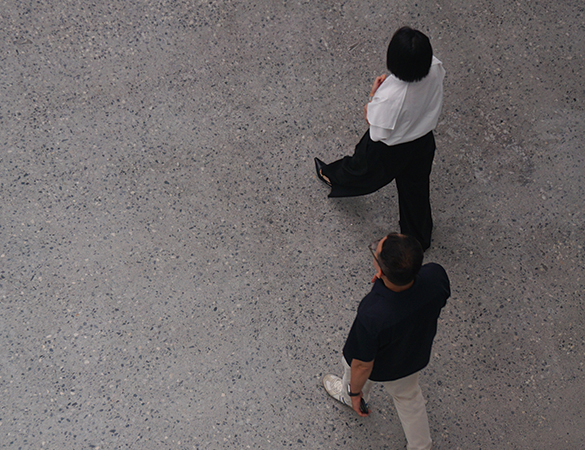SPACE September 2023 (No. 673)
ʻI am an Architectʼ was planned to meet young architects who seek their own architecture in a variety of materials and methods. What do they like, explore, and worry about? SPACE is going to discover individual characteristics of them rather than group them into a single category. The relay interview continues when the architect who participated in the conversation calls another architect in the next turn.
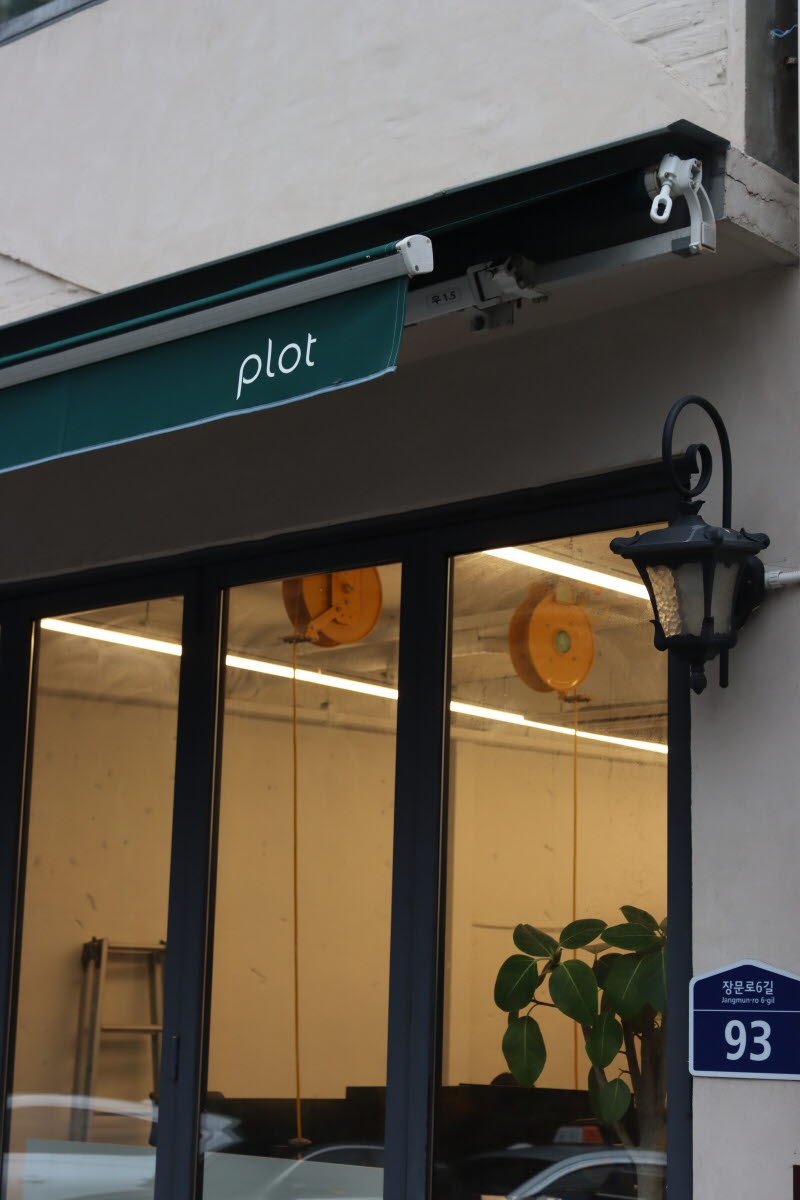
interview Kim Myoungjae, Choi Yeojin co-principals, Plot Architects × Youn Yaelim
A Neighbourhood Touching the Ground
Youn Yaelim (Youn): It has been a bumpy ride coming here. It was quite a hill to climb, and then there was a steep downhill right after!
Kim Myoungjae (Kim): Itʼs amazing that there are still neighbourhoods like this in Seoul. It has been a year and a half since we moved to Bogwang-dong, and I think itʼs an interesting neighbourhood to be in.
Youn: What led you to Bogwang-dong?
Choi Yeojin (Choi): Our first office was convenient because there were a lot of offices around, but I felt it lacked a sense of humanity. For one thing, there was no connection to the land.
Kim: We were thinking about working in a space where the front of the building was touching the ground, and we stumbled across this building.
Youn: It certainly looks like there are a lot of spaces here that are exposed to both the terrain and its people. The first floor is completely open with glass doors. Don’t you find this inconvenient?
Kim: Some people open the door thinking itʼs a café. (laugh)
Choi: We considered whether to put workspaces or meeting rooms on the first floor, but we thought it would be better from the perspective of the city to revitalise the first floor by placing the workspaces downstairs, since meeting rooms are often empty.
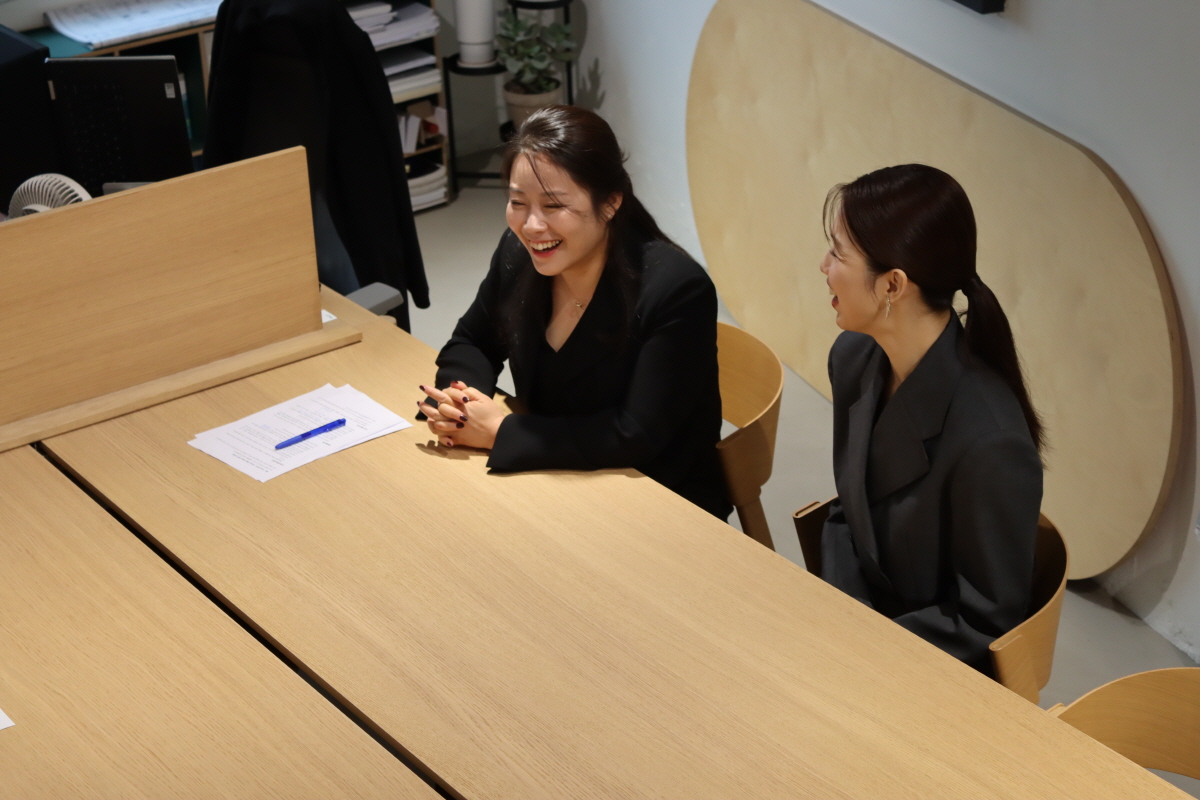
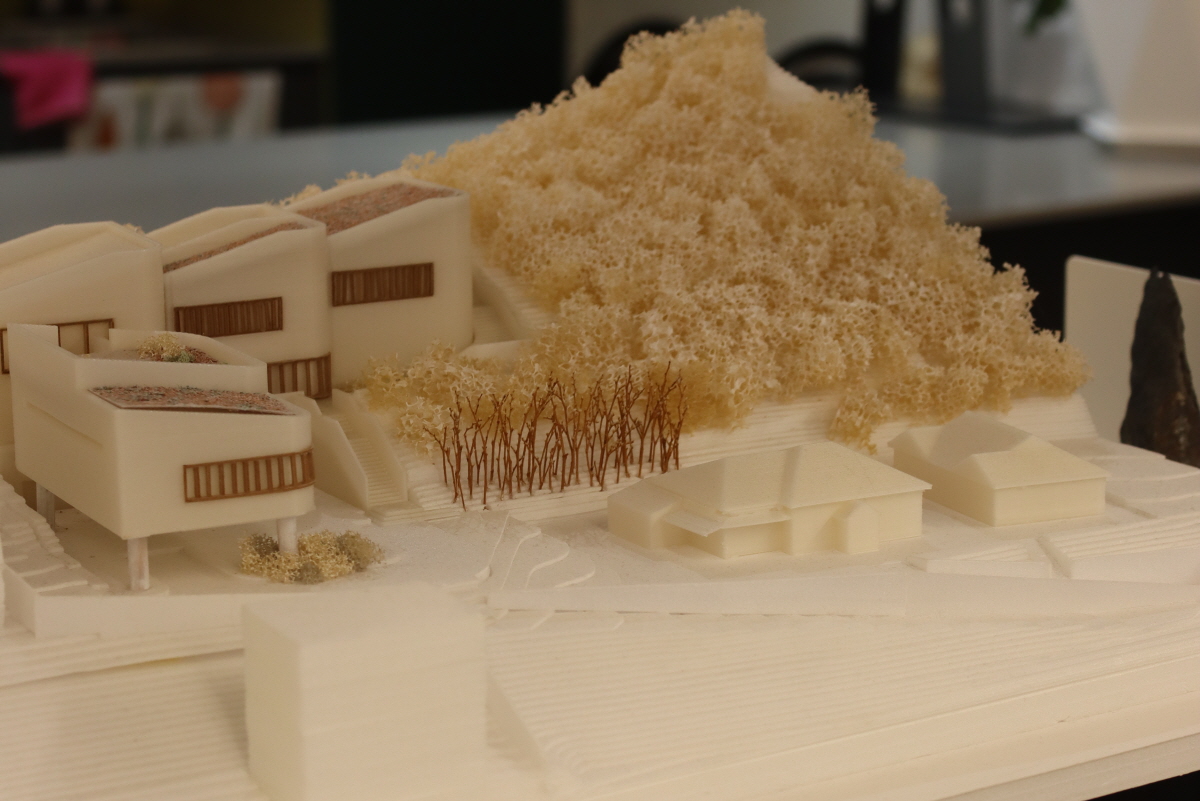
Being Together as Partners
Youn: I understand that you have been working together for 16 years. It’s lucky to have a partner you’ve known for so long.
Kim: We first met in the UK in 2007. I remember going to a Korean meetup consisting of The Bartlett School of Architecture graduates before the start of the semester, and there was only one woman sitting there.
Choi: There were only a few Korean students and even fewer female students, and so we bonded, maybe out of necessity.
Youn: You two have had a bond since then.
Kim: I think our friendship grew out of our shared interests. We went to see architecture, exhibitions, and performances together whenever we could.
Choi: Our shared love for music was especially strong, so we went to a lot of classical music performances. When the annual programmes of the concert halls came out, I would pick the interesting ones and book a yearʼs worth of tickets. I would give principal Kim the dates and she would join me. Later on, we traveled around Europe, not just in London, to see performances and do architectural tours. (laugh)
Youn: It seems you two formed the perfect friendship in terms of enjoying a rich cultural life together. What made you decide to come to Korea and to establish Plot Architects (hereinafter Plot)?
Choi: I loved experiencing different cultures and ways of working in the UK, but I kept wondering about when might be the right time to return to Korea and establish my own practice. Then came Brexit, and I witnessed the divisive culture of a country that had prided itself on embracing diversity.
Kim: One day when we were having dinner after work, principal Choi made a joke saying that she should go back to Korea if she didnʼt want to see the situation continue to worsen. I seized on what she said, thinking that it didnʼt really matter to me whether I was in a foreign country or in Korea―I just had a thirst to find out where I wanted to be in the future, and I knew that the only way to quench that thirst was to try something new, even if I failed.
Youn: You two might have had different thoughts about this, but came back together.
Choi: A lot of people ask me if itʼs hard to meet halfway when youʼre running an office with a person whoʼs not your family or our
spouse. But there are many advantages to having a partner. Since I came to Korea a year earlier, there were situations where I had to make decisions and take responsibility by myself because I couldnʼt communicate with principal Kim immediately, and it was overwhelming and frightening. I think itʼs very helpful to have someone who supports your decisions and confirms them with you, even if itʼs a small thing. Even if other people say weʼre wrong, we say weʼre right to each other.
Youn: There must be moments when each of your strengths comes into play.
Choi: We have contrasting personalities, which helps a lot in the running of the office. Principal Kim is decisive when it comes to planning and design and resolute at making decisions, while Iʼm a perfectionist, so I tend to hold off on things until they reach my standards.
Kim: Principal Choi usually picks up the pieces when Iʼve worked away more intuitively without full consideration of the outcome! (laugh) She fills in the details Iʼve missed and gives me the advice I need.
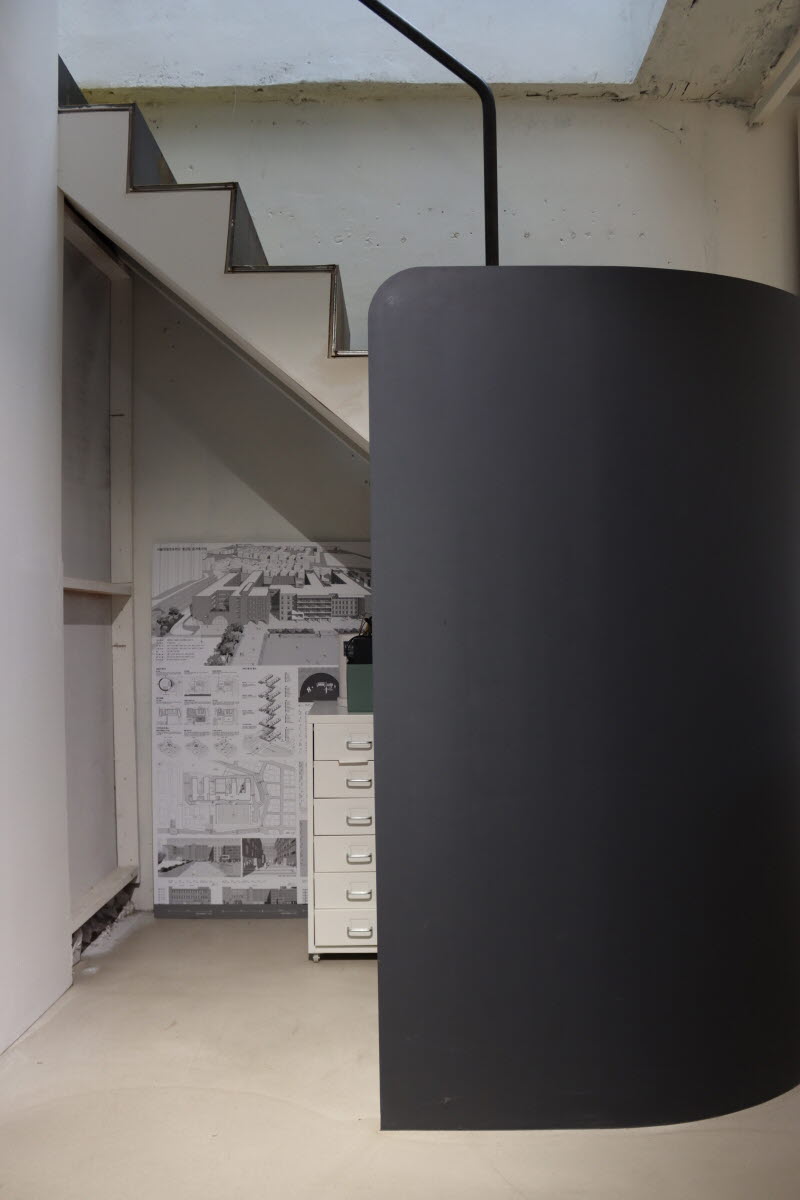
Office of Plot Architects
Through an Open Door
Youn: Plot has worked on a lot of public projects. It reminds me of something you said: ‘I want to design buildings that stay open after they’re finished.’
Kim: There was a project in London that I worked on for five years, and I went in and out of the site every day. However, when it was completed, I couldnʼt go in anymore because of the security. I felt disheartened. From then on, I always wanted to design a building that is always open to all.
Youn: Then it must have been a very different experience from what you were used to in the UK.
Choi: I feel the difference of the social pace the most. Sometimes, itʼs overwhelming to have to run at more than twice the speed of the UK to keep up with the social pace in Korea. Being fast doesnʼt always create the highest added value.
Youn: Sometimes the way back is faster.
Kim: However, people want to know the output beforehand investing time and money. It takes a lot of experimentation and research to get a good result and I think thereʼs a lack of awareness of that. If an architect wants to try something new, you have to do it on their own time and resources. On the other hand, in the UK, clients tend to come to architects after theyʼve done a lot of research on what they want to get out of the architectural process. I think thereʼs a difference in the perception of the role of the architect in social terms.
Youn: In the special feature on design competitions in our November issue, we heard about the many challenges faced when working on public projects.
Kim: It feels like weʼre the only ones who are accountable for the project, and weʼre fighting a lonely battle. Most public institutions, as clients, often choose the option that allows them to avoid a little bit of responsibility or risk, rather than the better alternative. However, itʼs positive that there are a lot of public projects organised by the government in Korea, so there are a lot of opportunities open to young architects. Iʼm glad that we have the opportunity to contribute to the public as architects.
Youn: Are there any clients or projects that stand out in your mind?
Kim: Weʼve been working on the Literary Museum for a poet, Ra Taejoo, at Gongju for a long time. I have a lot of memories of the poet Ra Taejoo coming to every important presentation or meeting and saying thank you. Itʼs not often that you meet someone who genuinely recognises and appreciates your efforts.
Choi: There was an opening ceremony the other day, and after the ceremony, he took us aside and played a reed organ. I heard that the poetʼs performance is a rare event. (laugh) Even though he didnʼt work directly with us, he seemed to understand the ifficulties of a process that we couldnʼt always put into words.
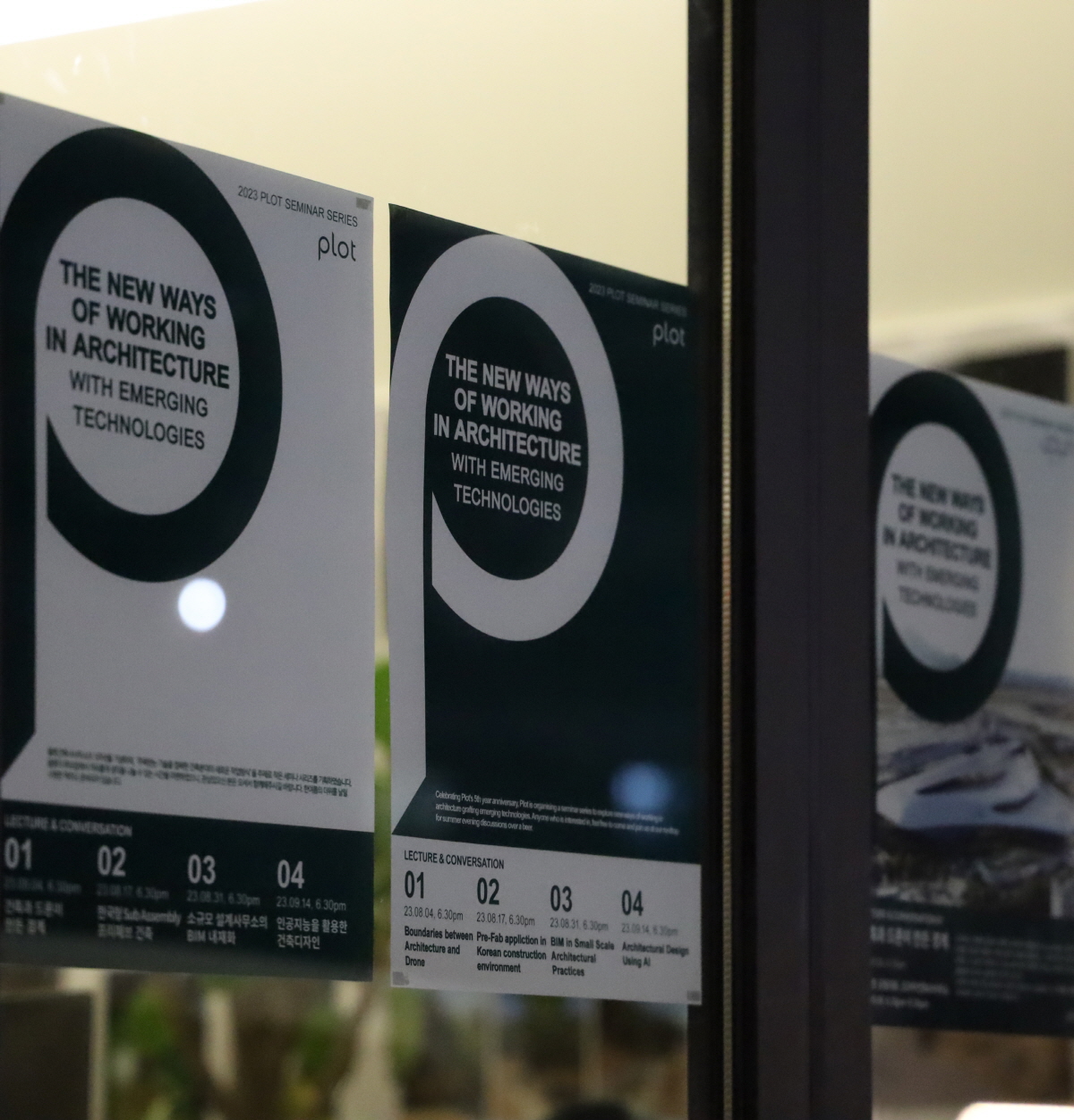
©Plot Architects
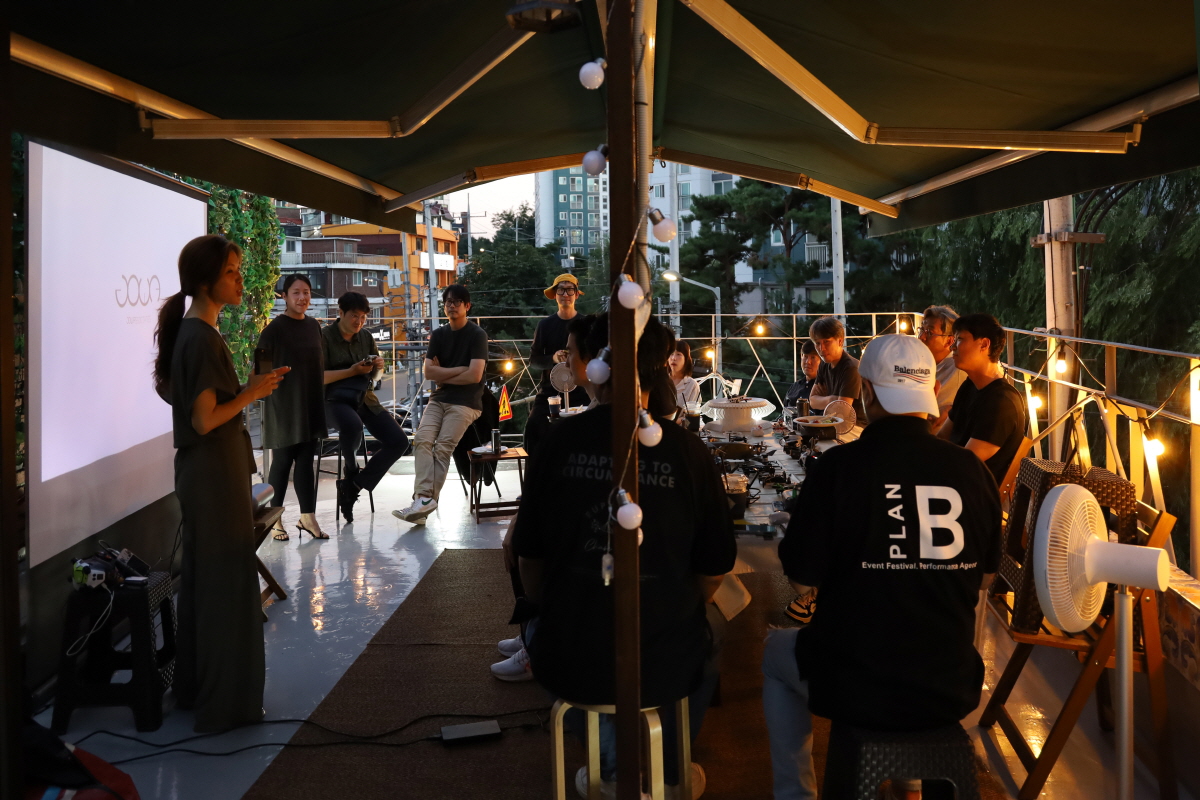
View of the five-year anniversary seminar ©Plot Architects
Excavating Stories
Youn: Plot is all about the land and its stories, and the reference to story is in your name. What is a ‘good story’ as defined by Plot?
Kim: There are no such thing as good stories. Itʼs not about the story itself being good or bad, itʼs about the space of telling a story. The more specific the story, the better, because the more specific the scenario, the better the design can be for the user. I think itʼs our job to draw out that story, to empathise with it, to imagine, and put it into space.
Youn: What a good space needs is not a good story, but the ability to draw one.
Choi: Itʼs why we try to have fun, travel, and experience a lot. You can go to a concert and see the concert hall from the audienceʼs point of view and the performerʼs point of view. I think the empathy that comes from experiencing different positions as a user, not a designer, leads to the ability to discover new stories and perspectives.
Youn: So, the story begins inside of you. What are your recent interests?
Kim: We always say that, if we had to draw an ideal picture on a blank sheet of paper, we would want to plan, design a space, and even come up with software to run it.
Youn: The five-year anniversary seminar you recently held here could be a good start.
Kim: It could be. We hosted a discussion on ʻThe New Ways of Working in Architecture with Emerging Technologiesʼ, which covered topics about Korean fabrication, internalising BIM in small design firms, and more.
Choi: At Plot, all of our projects are based on BIM, and we are applying prefabrication to some projects, but we want to use it more actively. In the UK, a prefabrication method called DfMA (Design for Manufacturing and Assembly) is being commercialised, where contractors and architects collaborate and actively discuss how to efficiently produce and implement designs. We wanted to discuss about how we can realise this method in Korea.
Youn: What are your expectations for the next five years?
Kim: Itʼs been an intense five years, and Iʼm sure there are a lot of stories buried in the archives of completed projects. Weʼve been running so fast that we havenʼt really looked back once weʼre done with each project. I think itʼs time to slow down and look back at our work and see the colours of Plot. We need to excavate our stories.
Youn: I can’t wait to see what the colours of Plot will reveal.
Kim: If we say the colour we want is deep green, we think right now itʼs more like a drop of green on white paint. We would like to get a little closer to the ideal.
Choi: I think thereʼs a difference between saying what you want to do and what comes out naturally in your work without you having to say it. Weʼre trying to organise what weʼve done to show our colours through our work, find stories, and build something new.
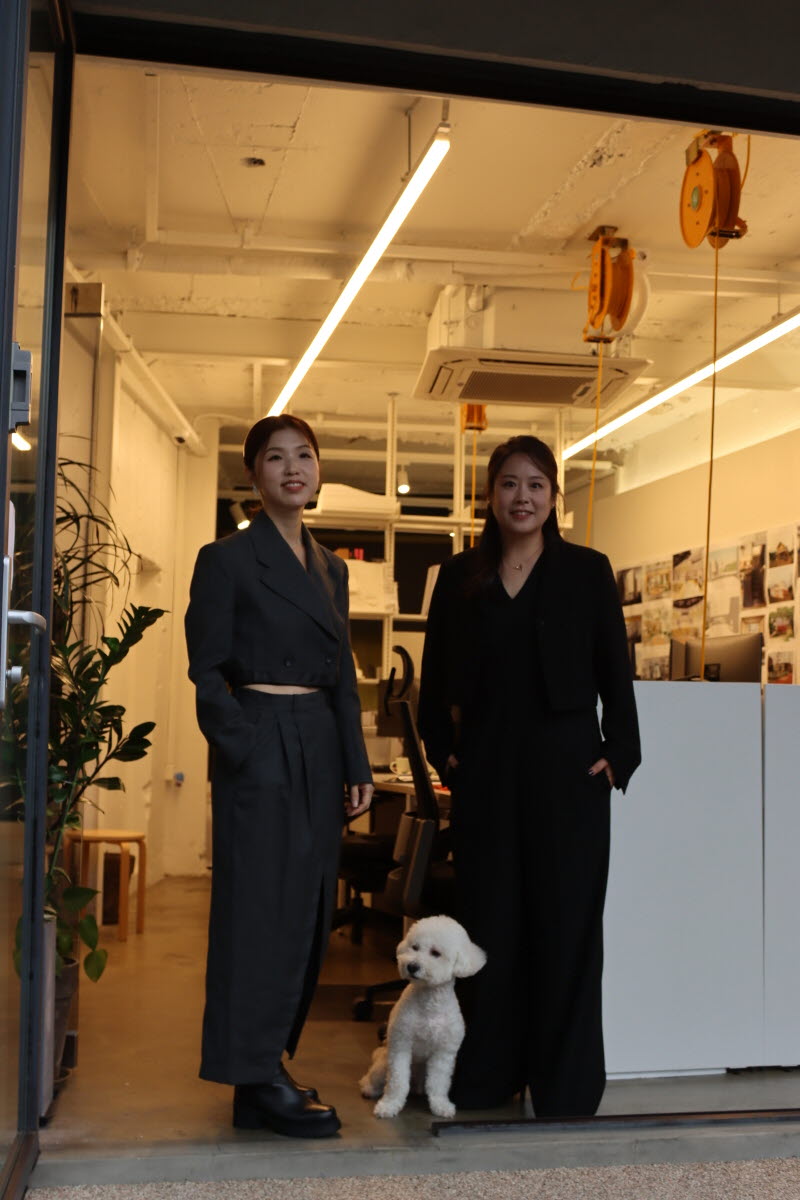
Kim Myoungjae, Choi Yeojin, our interviewees, want to be shared some stories from Choi Sylvia Soohee, Kwon Bojune (co-principals, Collab Works) in January 2024 issue.






